Oyster Farming
The Future of Oyster Farming: Innovative Floating Culture and Tidal Marine’s Cutting-Edge Products
Tidal specialises in products to aid in the farming of oysters in rack and bag, floating bag, floating cage and longline systems.
Growing oysters near the surface of the water is becoming an increasingly popular practice around the world. The benefits of floating cage and floating bag oyster culture include increased density of food at the top of the water column and the ability to flip and dry oyster bags to kill fouling organisms. The benefit of this type of oyster farming to the environment is cleaner water and the re-establishment of natural oyster reefs.
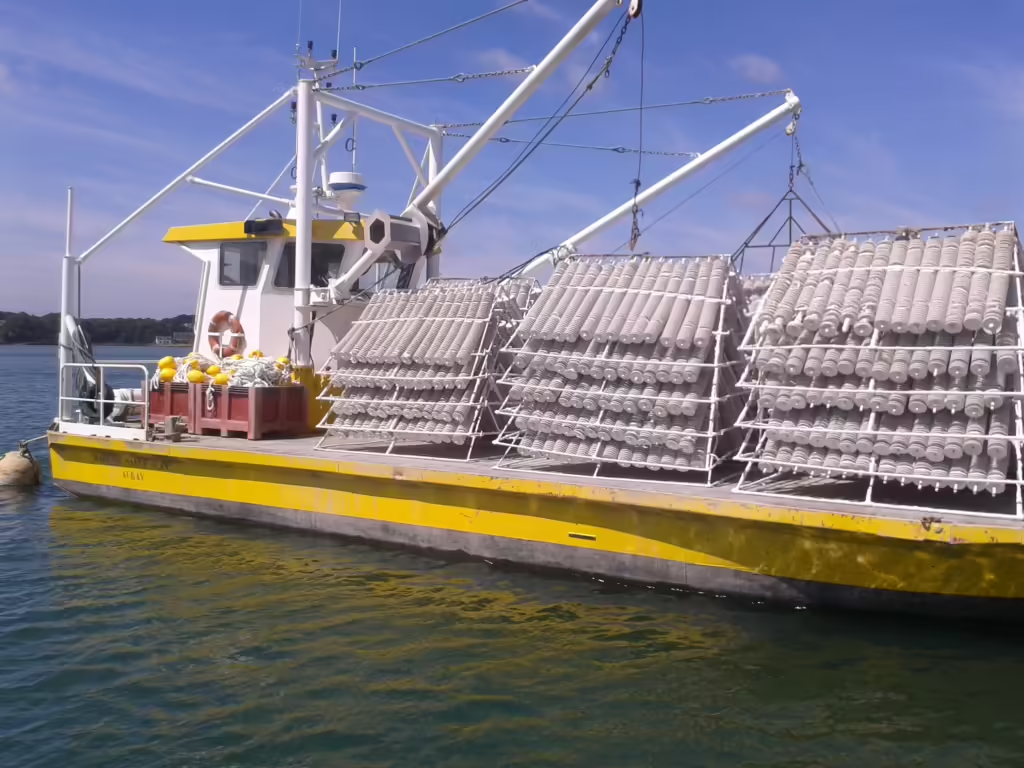
Oyster farming begins with the crucial step of seed collection, employing various innovative methods tailored to enhance efficiency and sustainability.
Coupelle Collectors: Pioneering Seed Collection
One popular method involves using “Coupelle” style collectors. These devices are coated with a unique blend of cement, lime, and sand, optimising conditions for oyster seed attachment. Strategically placed on racks or suspended from longlines, Coupelles efficiently gather young oysters. To support oyster farmers, TIDAL offers an extensive selection of seed collector longline buoys and specialised machines. These machines are designed to gently strip the seed from the collectors, ensuring both the longevity of the collectors and the safety of delicate oyster seeds.
Hatchery Seed
In controlled hatchery environments, oyster spat — the term for young oysters — are nurtured under precise conditions. Here, they receive a rich diet of nutrients that promote robust growth and disease resistance. This method not only reduces labour costs significantly but also starts the oyster’s life in a controlled, disease-resistant environment, ensuring better survival rates and quality.
Revolutionary Non-Spawning Oysters
Since 1979, when Standish Allen introduced the triploid oyster, the industry has seen significant advancements. Triploid oysters possess three sets of chromosomes, rendering them sterile and thus non-spawning. This unique characteristic allows them to grow continuously throughout the year without seasonal interruptions, making them available for harvest even during warmer months. Their consistent growth and year-round availability have made triploid seeds a preferred choice among many oyster hatcheries.
Upwellers and Downweller Systems: Supporting Early Development
To further support the development of juvenile oysters, many producers now use Upweller systems, or FLUPSY (Floating Upweller System). In these systems, oyster seed is housed in silos where it is continuously fed with phytoplankton-rich water. This not only speeds up their growth but also provides a protected environment that shields the young oysters from predators, competition, and biofouling during their vulnerable early stages.
These advanced techniques and systems in oyster seed collection are pivotal in sustaining and enhancing the productivity of oyster farms. By leveraging both traditional methods and cutting-edge technology, oyster farmers can achieve higher yields, superior quality, and sustainable farming practices.
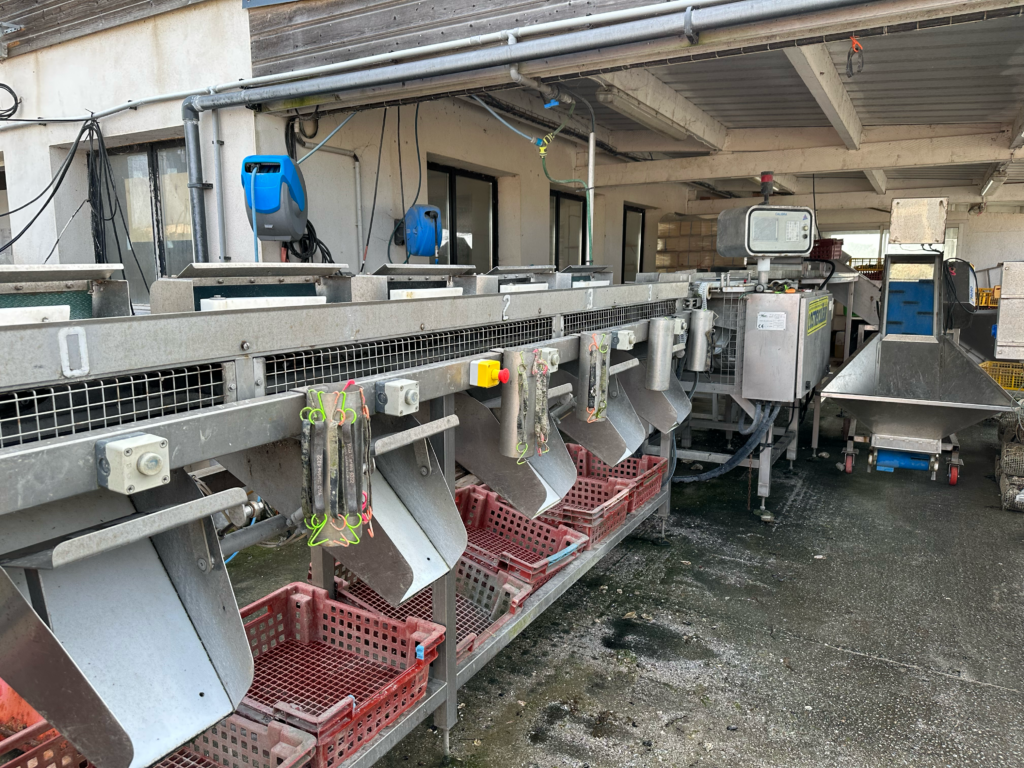
Oyster farming, a pivotal segment of the tidal marine industry, involves intricate processes that ensure the growth and quality of oysters. One crucial step in this aquaculture cycle is oyster seed grading. This process begins once the oyster seed reaches a specific stage in its growth cycle, marking a key phase in the management of these valuable marine resources.
The Process of Oyster Seed Grading
Oyster seed grading involves the systematic sorting of juvenile oysters based on size and weight. This step is essential for optimising the growth conditions and ensuring uniformity in the maturation of the oysters. Initially, the process starts by stripping the collectors—devices used to catch oyster larvae for growth. After stripping, the juveniles are sorted through a meticulous measurement process.
Techniques in Oyster Seed Grading
- Automated Grading Systems: To enhance efficiency and precision in oyster farming, many operations employ automated machinery for seed grading. These systems range from basic units with rotating drums or vibrating screens that help in sizing the oysters to more advanced machines equipped with cutting-edge camera and computer technology. Not only do these machines grade the oysters, but they also perform cleaning operations simultaneously, streamlining the process significantly.
- Manual Grading Methods: Despite the advancements in technology, some smaller oyster farms still prefer manual grading due to its simplicity and cost-effectiveness. Manual grading is a labour-intensive method where farmers manually separate oysters that have clung together and then measure each one individually. This hands-on approach, known as culling, involves using either hand-held graders or those fixed to the processing table. Once graded, the oysters are sorted into bins according to their size.
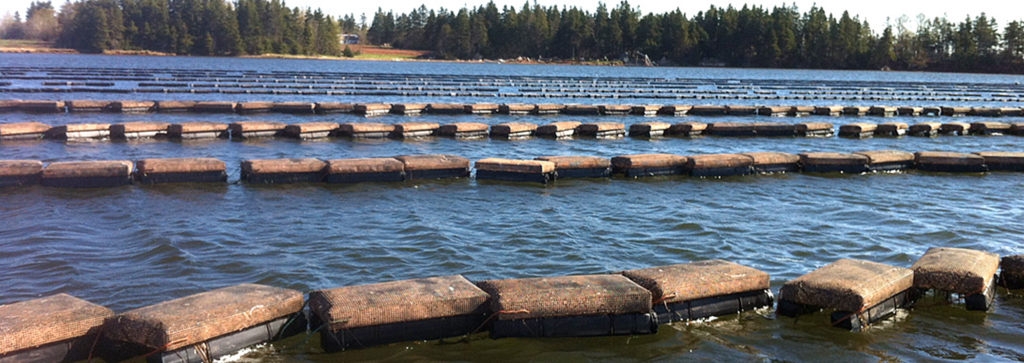
Oyster farming is evolving with technology, and one of the most promising advancements is the Floating Bag Oyster Culture. This method, which cultivates oysters at the water’s surface, is gaining popularity globally due to the ample availability of phytoplankton—a critical food source for oysters—and the natural movement of waves, which helps develop oysters with a desirable deep cupped shell.
The Mechanics of Floating Bag Systems
Floating bag systems utilise mesh bags suspended in water through various configurations—ranging from single to multi-bag setups attached to longlines. These systems harness the natural motion of waves to enhance the growth and quality of the oysters. The constant water flow through the mesh not only feeds the oysters but also protects them from predators, making it a highly efficient farming method.
Scalability and Efficiency
One of the chief advantages of floating systems is their scalability. Both small-scale and large-scale oyster producers can benefit from the modular nature of these systems, allowing for gradual expansion as business needs grow. Furthermore, the wave-induced motion inside the bags negates the need for manual labour to shake the bags, a common practice in traditional oyster farming to prevent oysters from sticking to the bags. This automatic process reduces labour costs and operational complexity.
Innovations in Fouling Management
Fouling, a common challenge in aquaculture, involves unwanted organisms attaching to the oysters and equipment. Floating bag systems address this issue innovatively. By periodically flipping the mesh bags out of the water into a “drying” position, fouling organisms die off due to exposure to air and sunlight. This simple flipping process efficiently manages fouling with minimal effort and without the use of chemicals.
Historical and Technological Progress
The concept of floating bag culture originated in Canada in the late 1990s and has seen significant technological advancements since. Initially inspired by similar setups in the French Rack and Bag culture, these systems have evolved from using basic polystyrene floats to employing sophisticated equipment like the Go Deep™ Oyster Bag Buoy Float. This buoy, introduced in 2001, is crafted from a durable, proprietary process originally developed for mussel farming. It is recognised for its durability and is now a standard in the industry, exported globally to enhance oyster farming techniques.
Single Bag Oyster System with Floats
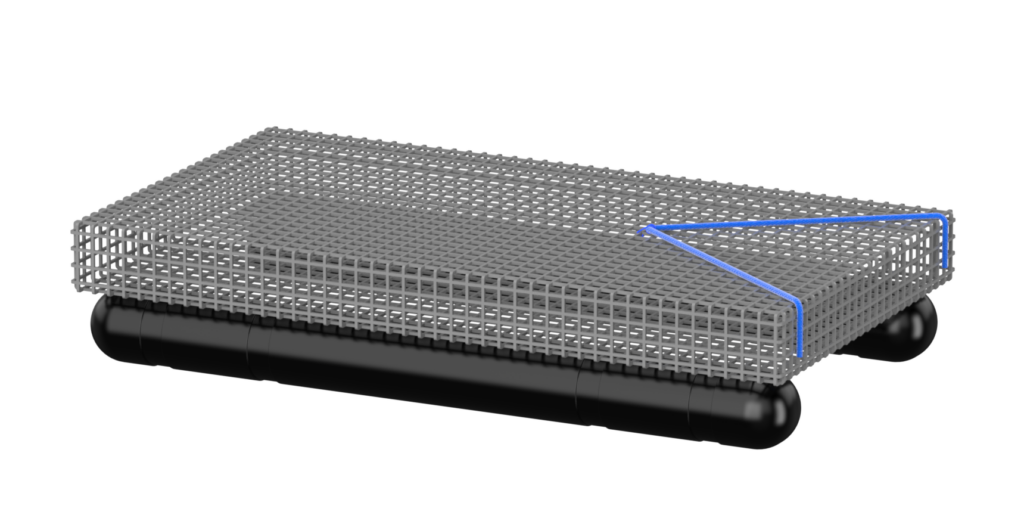
Oyster Farming with Vexar Grow-Out Bag
Vexar grow-out bags are essential tools in modern oyster farming, available in both square and diamond mesh patterns to suit various aquaculture needs. These bags come in mesh sizes ranging from 4 to 23 millimeters, catering to different stages of oyster growth. The semi-rigid design of these bags allows for easy customisation to fit specific farming requirements, making them highly adaptable.
Key Features of Vexar Grow-Out Bags for Oyster Farming
- Support and Suspension: Each bag is designed to be suspended in water, held aloft by two or more floats. This ensures the bag remains at the optimal depth for oyster growth.
- Flexible Attachment: Floats can be attached to the sides or the bottom of the bag using zip ties. This method provides stability and keeps the bag in the correct position within the water column.
- Adaptable Configuration: The setup is highly versatile, allowing for easy adjustments based on the specific environmental conditions of the site. This adaptability ensures optimal growth conditions and enhances the overall health of the oysters.
Double Bag Oyster System with Floats
Exploring the Benefits of the Two-Bag Floating System in Oyster Farming
In the innovative world of oyster farming, efficiency and sustainability are paramount. The two-bag floating system presents a superior method of cultivating oysters, designed to streamline the labour-intensive process of flipping and maximise the capacity of each longline.
This system integrates two or three Go Deep™ 11L Oyster Bag Floats with a durable, plastic-coated wire mesh panel. The setup facilitates the attachment of two mesh bags directly to the panel. This configuration not only optimises space but also enhances the overall stability of the farming structure.
Key Advantages of the Two-Bag Floating System:
- Increased Stability: By centralising the weight and securing the bags to a rigid panel, the system maintains better balance in water, reducing the likelihood of tipping or damage during varying tidal conditions.
- Enhanced Freeboard During Drying: The elevated setup ensures that the oysters have sufficient clearance above the water line during drying periods, which is crucial for their health and growth.
- Reduced Stress on Mesh Bags: Traditional methods can put significant strain on mesh bags, leading to wear and tear. The two-bag system minimises this stress, as the mesh panel serves as a secure anchor point, distributing the load more evenly and increasing the lifespan of the bags.
Implementing the two-bag floating system can lead to more efficient oyster production and potentially higher yields, making it a worthwhile consideration for oyster farmers looking to optimise their operations in tidal marine environments.
Four Bag Aluminum Oyster Cage System
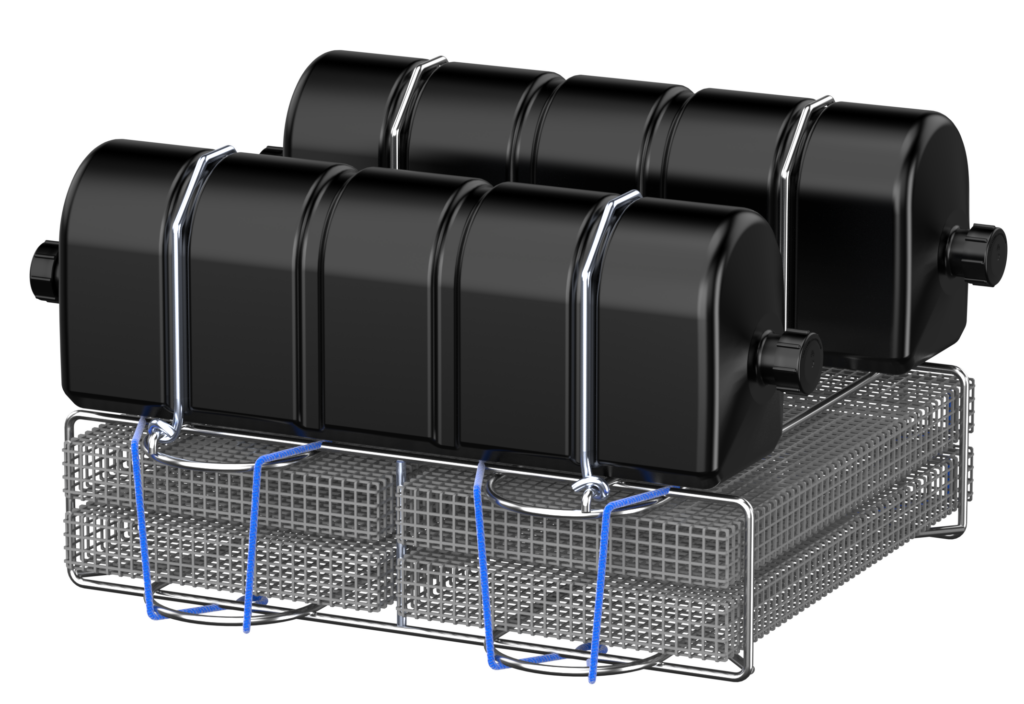
Enhancing Oyster Farming Efficiency with the Four-Bag Aluminium Cage System
For oyster producers aiming to increase their yield without expanding their workforce or investing in heavy machinery, the four-bag aluminium cage system offers an innovative solution. This method strikes an ideal balance between operational efficiency and sustainable growth in aquaculture.
Why Choose the Four-Bag Aluminium Cage System?
- Lightweight and Manageable: Compared to the bulkier six-bag systems, four-bag systems are lighter and easier to handle. This ease of management can lead to reduced labour costs and quicker adjustments in the farming setup.
- Optimised Water Flow: The design of the four-bag system ensures even water flow through each bag, promoting healthier growth conditions and potentially leading to higher quality oysters.
- Reduced Marine Fouling: The aluminum frame structure of the cages significantly lowers the amount of marine fouling. Unlike traditional wire mesh cages, which can deteriorate and become fouled over time, aluminium cages maintain their integrity and cleanliness, enhancing the overall farming environment.
- Durability Against Environmental Stresses: Crafted from rugged marine-grade aluminium bar stock, these cages are designed to withstand the mooring and lifting forces that typically damage wire cages. The robust construction ensures a longer lifespan and reduced maintenance costs.
Benefits for Oyster Producers
The four-bag aluminium cage system not only boosts productivity but also aligns with the goals of sustainability and efficiency in modern aquaculture practices. By adopting this system, producers can achieve a higher yield of oysters without the need for additional labour or more extensive equipment, making it an excellent choice for operations of any scale.
Six Bag Aluminum Oyster Cage System
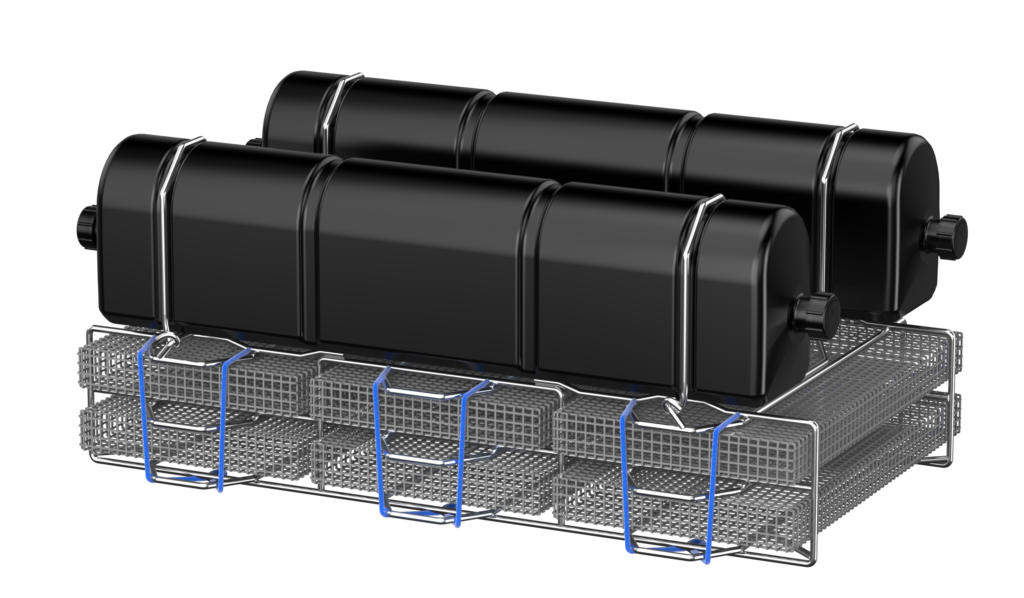
Maximising Oyster Production with the Six-Bag Aluminium Cage System
For oyster farming operations that require higher production volumes without sacrificing efficiency, the six-bag aluminium cage system offers a robust solution. Building on the principles of the four-bag system, this larger setup incorporates the same secure aluminium frame design while providing several distinct advantages for larger-scale operations.
Features and Benefits of the Six-Bag Aluminium Cage System:
- Enhanced Security and Durability: Like its smaller counterpart, the six-bag system secures oysters within a sturdy aluminium frame, protecting them from environmental stressors and reducing damage to the bags themselves.
- Increased Size and Capacity: This system’s larger frame accommodates six bags, making it ideal for operations that are scaling up. Although it is heavier and requires larger vessels and handling equipment, the increase in capacity can significantly boost production.
- Improved Stability and Efficiency: Thanks to its extended length, the six-bag system offers greater stability in water, which is crucial for maintaining the health of the oysters. Moreover, by reducing the number of cages needed overall, this system can simplify management and enhance operational efficiency.
- Cost Effectiveness: When considering the cost per bag position, the six-bag system is more economical at the point of purchase compared to smaller systems, offering better value for larger operations.
- Optimised Water Flow with Easy Management: The arrangement of bags in a 3 x 2 configuration may lead to reduced flow in the center bags. However, this can be effectively managed with regular grading and strategic rotation of bags within the cage, ensuring all oysters receive adequate water flow and nutrients.
Strategic Advantages for Commercial Oyster Farms
By integrating the six-bag aluminum cage system, commercial oyster farms can enhance their production capabilities while maintaining control over growth conditions and operational costs. This system is particularly suited for larger operations looking to expand their output efficiently.
ICE AND STORMS
Adapting Oyster Farming to Cold Climates and Severe Weather
Operating an oyster farm in regions prone to harsh winters or severe weather presents unique challenges, notably the risk of ice formation or storm damage. To mitigate these risks and protect both equipment and oyster stock, Tidal Marine has innovated with its Go Deep™ oyster cage float buoys, designed for both submersion and surface applications.
Winter Preparation and Ice Management
In colder climates, the formation of surface ice during winter months necessitates specific precautions to prevent loss. The process involves:
- Submerging Equipment: Prior to the onset of freezing temperatures, floats are detached from the floating bags, and caps are removed from the cage floats. This allows the floats to fill with water, causing the cages along the longline to sink sequentially to the seabed, where they safely remain until conditions improve.
- Spring Recovery: When the ice thaws in spring, the longline is retrieved. As it is pulled to the surface, the cages rise sequentially. The water is then drained, and the caps are reinstalled on the floats. It’s important to note that significant lifting forces may be exerted during this lifting process, especially if cages have settled into a soft seabed.
Severe Weather Strategy
The same submersion technique used to protect oyster farming equipment from ice is also effective in safeguarding against damage from severe storms, including hurricanes and tropical storms. By sinking the equipment to a sufficient depth:
- Storm Protection: This preemptive action can prevent the catastrophic loss of equipment and stock, as submerged cages are less likely to be affected by surface-level disturbances.
Benefits of Using TIDAL’s Go Deep™ Equipment:
- Versatility: TIDAL offers both cap-enabled floats for sinking and permanently sealed floats for use in sheltered areas where ice and severe storms are less of a concern.
- Protection: By using these adaptive measures, farmers can ensure their operations remain productive and sustainable, regardless of seasonal changes or unexpected weather events.
By implementing these proactive strategies, oyster farmers can effectively extend their farming season and safeguard their investments against environmental threats.
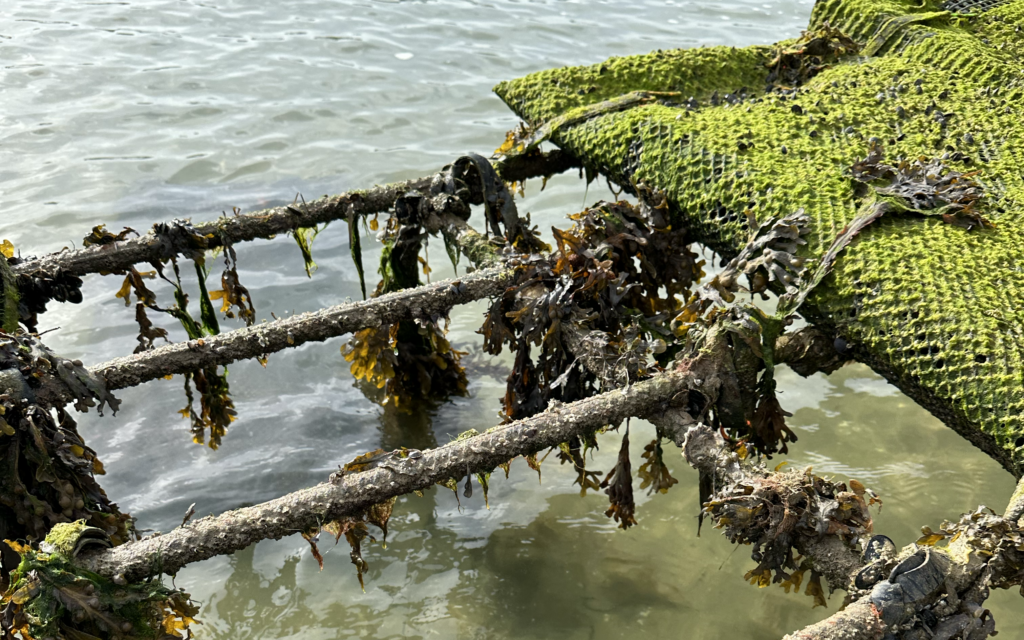
Rack and bag oyster culture represents a traditional yet widely adopted method of oyster farming employed across various global regions. This method involves placing oysters in mesh bags that are then secured to a framework, commonly made from steel rebar. These frameworks, or racks, are anchored firmly within the sediment of the intertidal zone, raising the bags above the seabed and sediment.
Benefits and Operational Insights
One of the unique aspects of this system is its operation in the intertidal zone, where the oysters in their mesh bags are exposed to air during low tide. This exposure is critical as it encourages the oysters to close tightly, a natural response that strengthens their abductor muscles. Additionally, this air exposure significantly reduces fouling on the mesh bags, enhancing overall farm cleanliness and oyster quality.
Challenges in Maintenance
Despite its benefits, the rack and bag method is known for being labour-intensive. Regular maintenance is essential, requiring farmers to detach, shake, flip, and reattach the bags periodically. This process is crucial to prevent the oysters from adhering to the bags or clumping together, which can affect their growth and health.
Innovations in Bag Design
The design of the bags used in rack and bag systems plays a pivotal role in oyster development. Typically, these are lay flat diamond mesh pouch bags, featuring a permanently sealed end to restrict the movement of oysters. This design contrasts with the boxed square mesh bags prevalent in North American floating bag systems, which are designed to encourage oyster movement and promote the development of a deep, cupped shell.
TIDAL’s Role in Enhancing Oyster Farming
At TIDAL, we are committed to advancing the rack and bag oyster culture through innovative solutions. We offer a range of specialized accessories tailored for the efficient attachment and closure of pouch bags. Moreover, our enhancements aim to increase the volume and movement within the bags, facilitating natural oyster movement. This not only helps in achieving the desired deep cup shaping of the oysters but also significantly reduces the labour typically associated with rack and bag farming.
The Importance of Proper Site Marking in Aquaculture
Navigating the waters where oyster farms are located can pose significant risks to marine traffic, especially if the farms are not adequately marked. The shared waterways used by both recreational and commercial vessels can become hazardous zones due to the location and depth of aquaculture sites. Proper marking of these sites is not just a regulatory requirement—it’s a critical safety practice that protects vessels and supports the successful operation of marine aquaculture.
Understanding the Risks
Unmarked or poorly marked oyster farming sites increase the risk of accidents on the water, which can lead to serious damage to both small and large vessels. The stakes are high, considering the potential for these incidents to disrupt oyster farming operations and impact marine ecosystems adversely. It’s for this reason that oyster farmers must be diligent in marking their leases, ensuring they are visible and recognizable to all who navigate these waters.
Standard Marking Practices
In aquaculture, particularly in oyster farming, ensuring the visibility of farming sites is crucial for safety and operational efficiency. Here are the standard practices for site marking:
- Use of Yellow Marker Buoys: Yellow is chosen for its high visibility on water. This colour stands out against the backdrop of the sea and sky, making the buoys easily noticeable from a distance.
- Placement of Buoys:
- Corners of the Lease: Buoys are placed at each corner of the lease area to outline the exact boundaries of the site.
- Perimeter Marking: Additional buoys are spaced along the perimeter to provide a continuous visual barrier that is clear and understandable to passing vessels.
Objective: The primary goal of these markers is to reduce the risk of boats unintentionally entering the farming area, which can lead to damage to both the vessels and the aquaculture infrastructure.
These practices are designed to ensure that all parties using the waterways can coexist safely and efficiently, minimizing risks and fostering a mutually respectful marine environment.
Resources and Best Practices
For oyster farmers and maritime operators, understanding the best practices for site marking is crucial. While specific guidelines can vary by region, the fundamental principle of clear and effective marking is consistent across different areas. To assist with this, a variety of resources are available that provide detailed guidance on how to properly mark aquaculture sites. These resources are designed to help farmers meet legal requirements and ensure the safety of all marine users.
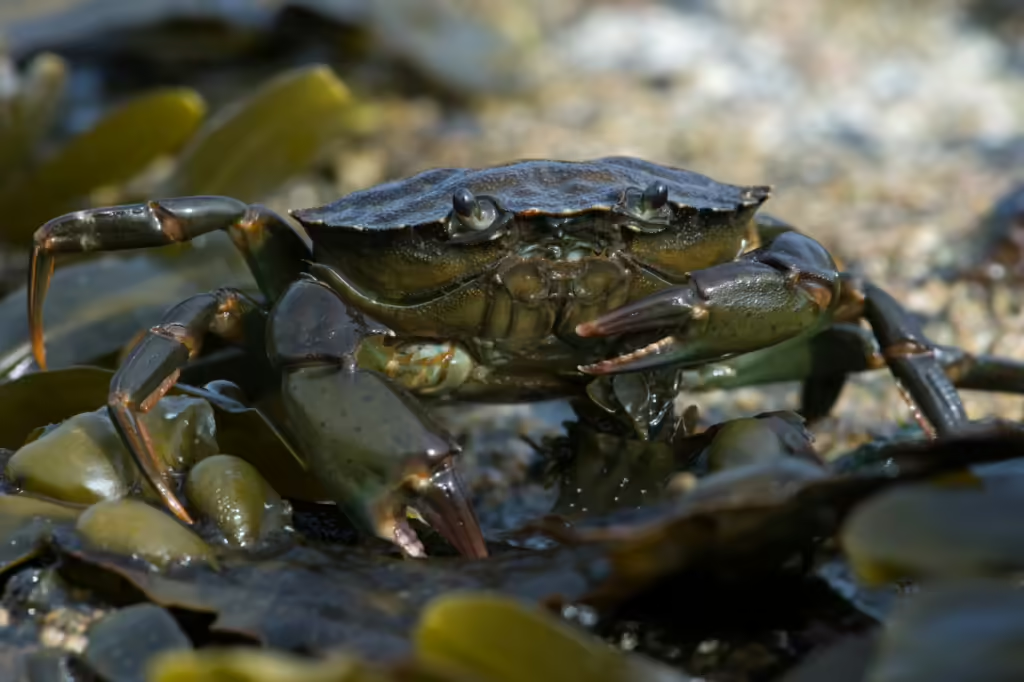
Oyster farming is a vital industry that thrives in tidal marine ecosystems. However, these valuable mollusks face numerous threats from various predators and environmental factors. Understanding these challenges is crucial for effective oyster farm management.
Predators of Oysters
Boring Sponge
The boring sponge inhabits waters from the Western Atlantic Ocean to the Bahamas. It can reproduce both sexually and asexually, and poses a unique threat to oysters by boring into their shells using chemicals that dissolve calcium carbonate. Over time, this intrusion can lead to the death of the oyster as the sponge takes over its shell.
Oyster Drills
This predatory snail is found from Nova Scotia to Florida, as well as in Northern Europe and the western coast of the United States. Oyster drills are particularly detrimental to commercial oyster farms as they bore into oyster shells and consume their contents.
Whelk
Similar to oyster drills, whelks are marine gastropods that prey on oysters by drilling through their shells. They are prevalent in various parts of Europe and the North Atlantic, extending as far south as New Jersey in the USA.
Crabs and Lobsters
Both crabs and lobsters present a threat to oysters by crushing their shells to access the meat inside. These omnivores are found worldwide and are especially problematic for oysters cultivated on the sea floor.
Flatworms and Leeches
Oyster flatworms and leeches specifically target young oysters. These parasites can devastate juvenile populations by consuming them when they open their valves to feed.
Sea Stars and Fish
Sea stars, or starfish, utilize their digestive enzymes to liquefy and ingest the interior of oysters. Similarly, certain fish species like the cownose rays and oyster toadfish are significant predators, using their specialized feeding mechanisms to prey on oyster populations.
Environmental Threats
Parasitic Diseases
Diseases such as Dermo and MSX, caused by single-celled parasites, significantly impact oyster health. These parasites invade oysters, disrupting their feeding mechanisms and leading to high mortality rates. Similarly, QX disease affects Sydney rock oysters, often leading to death within weeks of infection.
Water Salinity
Optimal oyster growth occurs in water salinity levels ranging from 5 to 35 ppt (parts per thousand). Oysters are sensitive to extreme changes in salinity, which can stress the animals and make them more susceptible to disease and predation.
Managing Fouling Organisms
Fouling organisms like barnacles and mussel spat can hinder oyster growth by competing for space and resources. Effective management practices, such as regular maintenance of farming equipment and the use of brine baths, are essential for controlling these pests and ensuring healthy oyster development.